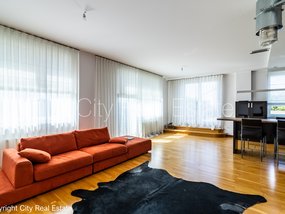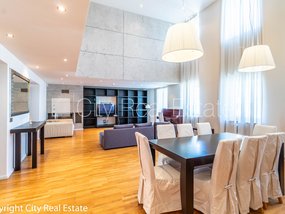Prewar buildings started to build in a period till begining of the World War 2.
In construction mostly has been used following materials: dolomitic stones, boulders and clay bricks.
Stone buildings in Latvia came along with colonizers and western christianity bearers in end of 12th century and till begining of the 13th century.
As initial was build defencive buildings - secure guard from aboriginals.
First settlement protective walls and stone buildings was something extraordinary and new for domestic people.
At this time inside protective walls in Riga had been build only wooden buildings as well as churches which were enclosed with 5 meters high protective walls.
First stone buildings in Riga were made from dolomitic stone what at that moment was most accessable building material.
Also limestone was no rarity so first buildings tried to build from carefully cultivated, irregular grey dolomitic stone blocks.
Because such large stones was rarity, in stone building construction was also used not so regular stones.
In Middle Ages building walls was made in belts where each belt was approximately 50-80 cm. high.
That step was involving with stagings whose horizontal wooden elements normally was ground on build wall.
Usually between belt visualty can see double joint. Itself wall outside was made from stones but inside was filled with limewash in which was cast into irregular stones.
Bricks in Latvia started to produce only in 13th century when in construction started to use burn clay bricks, walls "shell" were lay from bricks and in filling used brick and tile fragments
From outside all the best but inside what was left over.
Bricks lay in appointed style-Gothic, the Vends style, creating regular framework.
It time after time added with another color bricks - black (overburned) or glazed.
Bricks as material were used in regions where around was easy access of lavish clay deposits.
But in places where were easy access of stones and bricks, bricks choosed as decorative material however masonry walls what is made from one material is most resistant.
Buildings which were build till 15th century were very qualitative but when started big building boom, building quality decreased.
In brick buildings has been used different size bricks and between bricks immured stones, moreover seams between bricks become superficial.
Wherewithal from bricks made facades in that time started to decorate in brick tone, afterwards drawing bricks on it.
Brick facade decorating continued till begining of the 20th century when in trade started to use very high quality bricks.
Starting from second part of the 16th century also stone wall quality go down, in this time of period started intensive usage of bonfire shelly dolomite and boulders.
At the end of 16th century stone walls no more lay in belts but started to use seizing method and used this method till begining of the 20th century when in Latvia grow best looking buildings which were build from boulders.
Walls which were made in the 17th century were low quality because in this period used all possible materials in spite of its compatibility and physical quality.
Innovation in building wall construction was established only in the begining of the 19th century.
In walls which were made from stones started to make air split layers,in purpose of economy, what is good heat isolation.
Inside external walls from room side lay one part of bricks with air split layer when upgrading old buildings.
In that way heat insulation was done for outside walls of building but in interior brick walls get smooth plastering.
In the second part of the 19th century and at the begining of the 20th century almost all buildings which were made from bricks had air split layer in walls.
Unfortunately saving expenses these building walls were made non-quality.
Stone building the weakest place is fundamentals.
Most important reason why stone buildins are fissuring is because of intensive traffic, because of badly created fundamentals ( shallowly dig in, time after time in general not dig in passing over ground factors), groundwater fluctuations and fundamental isolation.
The biggest groundwater fluctuations go on when is going unconsidered construction, blocking or throw into confusion groundwater movement.
From the year 1910 till begining of the World War 1 every year in Riga have been build approximately 300 new stone buildings.
From the year 1904 started to build art nouveau buildings therefore in the centre of Riga approximately 40% buildings was build in art nouveau style.
Characteristic of prewar building apartments:
- ceiling height from 2.5 meters till 3.7 meters;
- in not transformed apartments, mostly in owners houses, as often as not, is two entrances (earlier one entrance was for owners of apartment and second for employees);
- building height is till 6-storey;
- room space is large in prewar buildings, except stuff rooms which are small;
- stone buildings is cold because it have thick walls which is hard to heat, but in spite of all, these negative points associations that these buildings is courageous till nowadays.
Used literature for information prepare:
www.riga.lv , Article „ Architecture of Wooden Buildings”
www.republika.lv , Article „Kur celusies maksla, ar ko lepojamies?”, author Baiba Pare
Data publishig without reference to source and without Ltd. „City Real Estate” written agreement is forbidden!

Apartment for rent in Riga, Riga center
Ganu street, 2th floor, 2 rooms, 48.00m2
1100.00 EUR 22.92 EUR / m2

Apartment for sale in Riga, Ziepniekkalns
Ziepniekkalna street, 6th floor, 3 rooms, 133.00m2
255000.00 EUR 1917.29 EUR / m2

Apartment for rent in Riga, Riga center
Pulkveza Brieza street, 6th floor, 5 rooms, 232.00m2
1700.00 EUR 7.33 EUR / m2